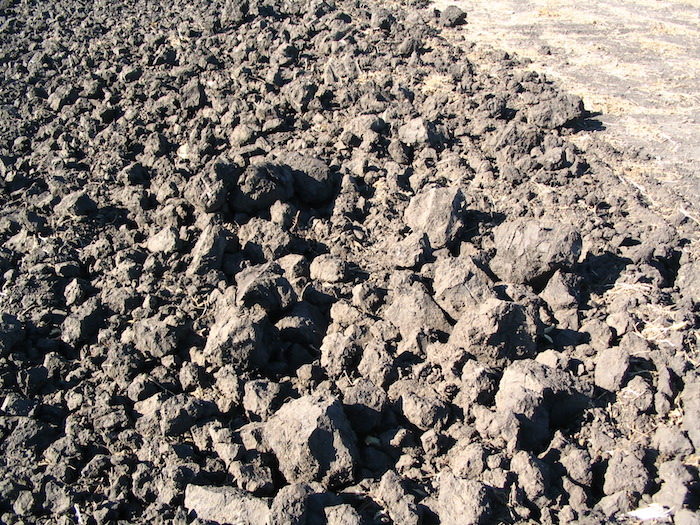By Anna Cates, State soil health specialist, and Jodi DeJong-Hughes, Extension educator
Farmers across Minnesota are quickly moving through harvest. Soybeans are mostly done and corn is well underway, if not completed, in most areas. How you leave your fields in the fall is the beginning of planning for the 2023 planting season. Consideration for the very dry weather we’ve had in 2021 and 2022 should be top of mind as farmers plan for a successful spring planting in 2023.
Leave a blanket of residue
Our soil profile is very dry after record-low rainfall in September. For example, at Lamberton the soil down to 60” is holding less than half of normal. Snow is coming, but the soil can only capture about 25% of the moisture that comes in snow over the next few months. It’s important to leave a blanket of crop residue in the field to hold in the limited moisture you’ve got, and whatever comes next, by slowing down evaporation. Taller residue, like corn stalks over a foot high, and wheat stubble, will capture snow and keep it from blowing away into ditches and windbreaks. This residue will also wick in spring rains.
Try to avoid fall tillage
Tillage in the fall will generally increase evaporation and reduce the soil moisture in the surface layers of soil. Most years, this is a primary goal of fall tillage: to dry out and warm up the soil for the spring. This year, that strategy could backfire. Evaporation is based on the depth of tillage, the amount of soil that is moved, and the number of passes across the field. For corn and soybean fields, consider leaving the residue over the winter and doing a light pass of tillage in the spring. University of Minnesota and North Dakota State University research has shown that no-till soybean usually yield the same as a fully tilled field. Corn is a little more particular but deep tillage or multiple fall passes very rarely result in a higher yield.
What if I have a low-residue crop?
For fields with very little surface residue (like dry beans, potatoes, or sugar beets), then a choppy surface pass with a field cultivator or chisel plow might actually slow water running off the surface a. This leaves a rough soil surface with small depressions where snow and rain can pool and eventually infiltrate into the soil profile. As dry as the soil is right now, the deeper the tillage the larger the soil clods that will be pulled up. Stay shallow, about 4 inches, to minimize the clod size and still be able to trap snow and rain.
Plan to terminate cover crops earlier next spring
Cover crops use water while they grow but hold in water by adding residue to the surface and increase water storage through better structure. It’s been a hard year to establish due to dry conditions, if you have something established already it will be critical to terminate a little earlier in the spring so that you don’t deplete the soil moisture too much for a cash crop. Planting your cash crop in a no-till or strip-till system will keep the cover crop residue intact to hold water for next year. Data from Southern MN research plots show that in 2021 and 2022, soil water didn’t differ substantially with cover crops after the first few weeks of the 2021 growing season.
On the bright side, the dry conditions do provide a few benefits: First, there is little compaction from harvest equipment, and second, the cracks you see in the soil are doing tillage for you so deep, aggressive tillage is not needed.







Post a comment
Report Abusive Comment